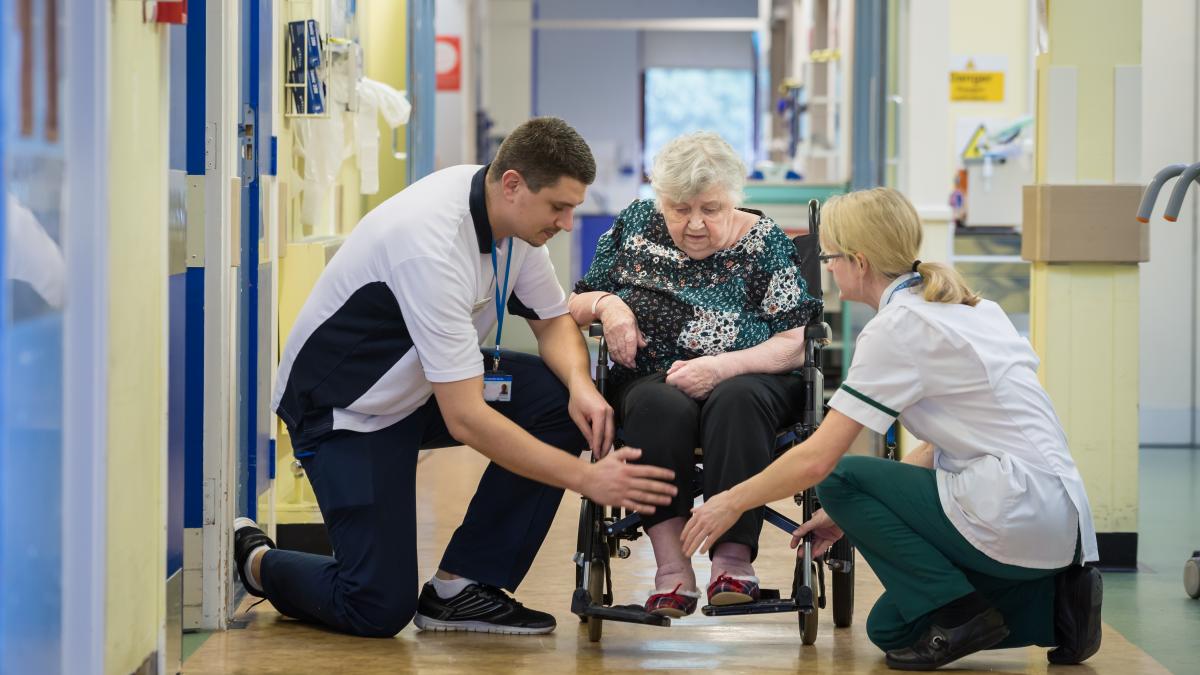Vulnerable patients recovering from hip fracture are facing unacceptable variations in care, warns the Chartered Society of Physiotherapy.

Photo: Royal College of Physicians
A major new audit conducted for the Chartered Society of Physiotherapy (CSP) reveals that hip fracture patients can wait up to 80 days before seeing a physiotherapist at home after being discharged from hospital.
Hip fracture is the most common cause of injury related death in adults. It costs the NHS and social care £1 billion per year. Hip fracture will affect one in three women over 50. Hip fractures are more prevalent than breast cancer.
The audit, which was conducted by the Royal College of Physicians reveals the average wait was 15 days, but some patients have to wait up to 80 days. The amount of rehabilitation patients received varied greatly, with some patients getting less than 1 hour per week.
NICE guidelines state after surgery, hip fracture patients should be offered rehabilitation at least once a day. The survey revealed four out of ten (43 per cent) missed a day’s therapy due to no physios being available.
Professor Karen Middleton, chief executive of the CSP, said:
‘Hip fracture patients who do not receive rehab soon after leaving hospital risk depression, deteriorating health, and losing their mobility.
‘This can bring not only further costs and pressures for the system, but more importantly, devastating consequences for the individual and their families.
‘High quality and intensive rehab in the first week after surgery gives hip fracture patients the best chance of recovery, and at least 20 minutes of therapy a day could free up 1000 hospital beds a year.
‘We must invest in transforming acute and community services to ensure access to high quality rehab and continuous care for all those who need it.’
Iona Price, deputy chair of the Falls and Fragility Fracture Audit Programme, lost her 88 year old mother to a chest infection; one of the risk factors for hip fracture patients who do not receive continuous rehab after leaving hospital. She said:
‘My mother broke her hip in 2012 and had to wait almost four months for community rehab services.
‘During that time, she had to move into a nursing home and was completely dependent on others for her every need which soon led to depression.
‘Complete loss of independence aside, I can’t help but think she would have made a much healthier recovery had her access to treatment been timely.
‘We encourage patients and their loved ones to raise concerns with their local GP if they are not able to access the rehab that they need.’
Only one in five services (20.5%) successfully maintained the continuity of their patients’ rehabilitation, providing optimal care and the best possible chance of recovery.
Dr Antony Johansen, Clinical Lead, National Hip Fracture Database, Royal College of Physicians, said:
‘If frail and older patients are to return to their normal lives, they must be helped to get up as quickly as possible after surgery. This report shows that we are failing to achieve this for a third of people, with much poorer figures in some hospitals suggesting that they need to improve their multidisciplinary team-working.
‘Patients need regular physiotherapy so they can start rehabilitation as soon as possible and maintain this throughout their recovery - from hospital to home. The report clearly shows the benefit of properly coordinated care for all patients, regardless of where they live.’
The CSP are working with patient groups and other professions to draw up best practise guidance for the rehabilitation of people with hip fracture in the UK.
Note to editors
For further media information about the CSP please call the CSP press office on 020 7306 1111 or email pressoffice@csp.org.uk. Out of hours please call Christine Tama, senior media advisor on 07771765172.
1. The Chartered Society of Physiotherapy is the UK’s professional, educational and trade union body for physios, physiotherapy support staff and physiotherapy students. We have more than 57,000 members. Nine out of ten qualified physiotherapists are members.
Find Out More
Number of subscribers: 0



































